Exploring the Cosmic Wonders of the James Webb Space Telescope
Written on
Chapter 1: The Launch and Ambitions of Webb
The James Webb Space Telescope (JWST) is poised to return astonishing cosmic images. What revelations await us?

GJ 1214 b is a warm sub-Neptune-sized exoplanet located approximately 48 light-years from Earth. It is among the most examined exoplanets, yet its thick atmosphere remains a mystery due to hazy aerosols obscuring its gas composition. (Credits: NASA, ESA, CSA, and D. Player (STScI))
Launched on December 25, 2021, with great anticipation, the James Webb Space Telescope successfully unfurled its main mirror weeks later, avoiding the fate of its predecessor, Hubble. This intricate mirror assembly, designed to withstand the challenges of space, represents a significant achievement in engineering.
James Webb is set to extend humanity's view deeper into space and back in time like never before, with scientists eager to uncover answers and raise new questions about the farthest reaches of the cosmos. The telescope will also examine our celestial neighbors.
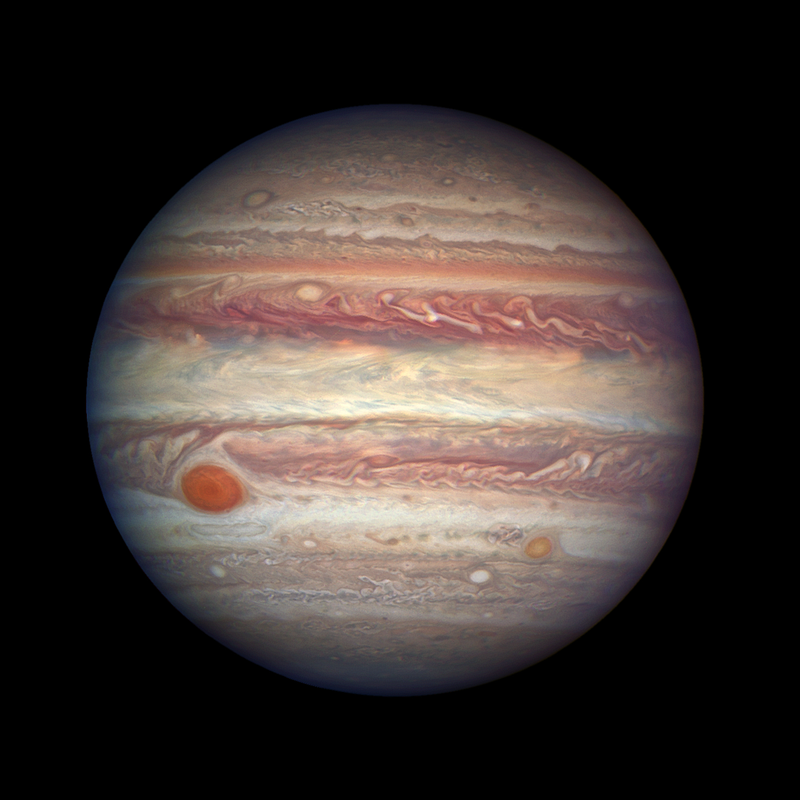
This stunning image of Jupiter was captured by NASA's Hubble Space Telescope, showcasing the planet when it was 415 million miles away from Earth. (Credits: NASA, ESA, and A. Simon (NASA Goddard))
While astronomers have scrutinized nearby planets like Jupiter and Saturn for millennia, many questions remain unanswered. A significant focus is on Jupiter and its fascinating moons.
According to NASA, "NASA's James Webb Space Telescope, the most ambitious and complex space observatory ever built, will utilize its unmatched infrared capabilities to investigate Jupiter's Great Red Spot, enhancing our understanding of this mysterious storm and building on data collected by Hubble and other observatories."
The Great Red Spot, a colossal storm larger than Earth itself, has been churning since at least 1831, with its first documented sighting in 1665. Scientists have long anticipated its eventual dissipation, and unraveling the mystery of its persistence is one of Webb's primary missions.
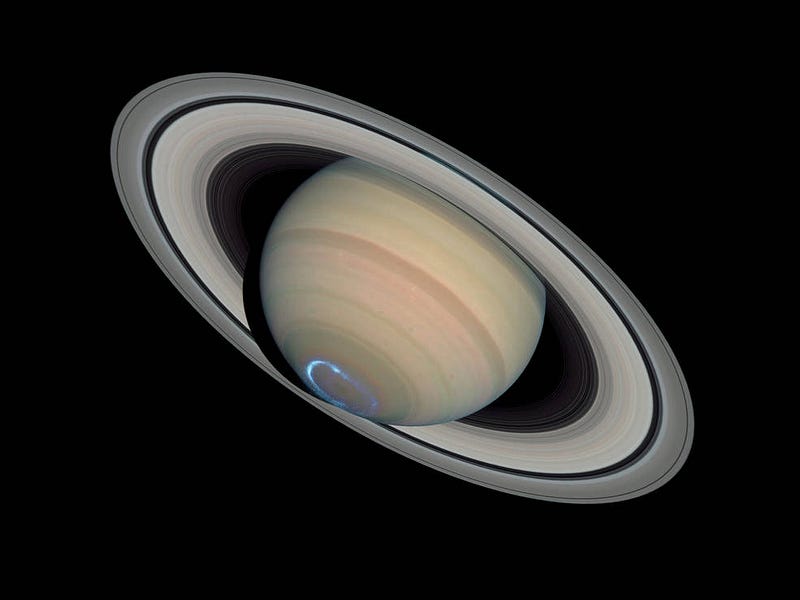
Saturn showcases auroras similar to Earth’s northern and southern lights. The image illustrates Hubble's ultraviolet observations superimposed on a visible-light image of the planet. (Credits: NASA, ESA, J. Clarke (Boston University), and Z. Levay (STScI))
NASA is equally excited about studying Saturn. "There remains much to learn about Saturn, particularly its unique weather patterns and the origins of its stunning ring system," NASA explains.
With some of its transmissions, Webb aims to gather crucial observations regarding "Saturn, its rings, and its family of moons as part of a comprehensive solar system initiative." This effort will be led by Heidi Hammel, a planetary astronomer who emphasizes the importance of demonstrating Webb's capabilities for solar system observations.
Webb builds on the legacy of NASA's Cassini spacecraft, which orbited Saturn from 2004 to 2017, gathering invaluable data before concluding its mission in a spectacular finale.
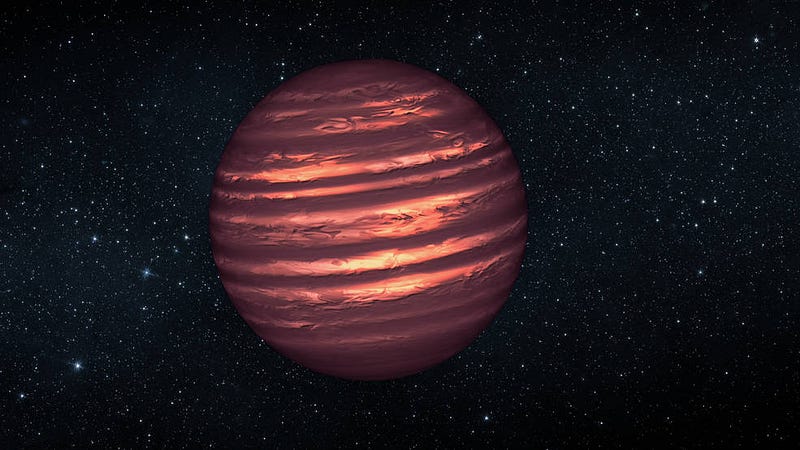
This artistic rendering depicts a brown dwarf, showcasing the cloudy atmosphere of a planetary body and the residual light of a near-star object. (Credits: NASA/ESA/JPL)
In addition to familiar planets, the James Webb Space Telescope is set to probe the uncharted territories of celestial bodies. "Astronomers are hopeful that Webb's advanced infrared capabilities will help resolve the enduring question of what that faint light in the sky is," NASA states. "Brown dwarfs challenge the clear distinction between stars and planets, questioning existing theories about their formation."
NASA thrives on inquiry, and if Webb can provide answers, that would be a significant advancement.
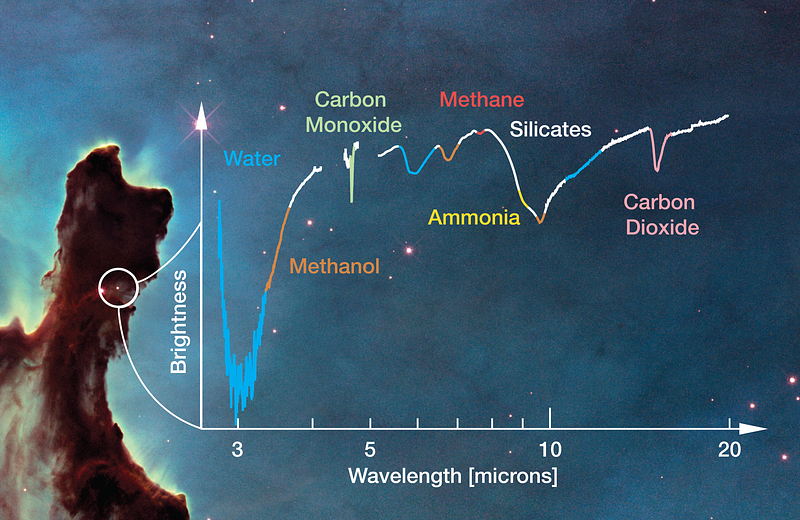
This simulated spectrum from the Webb telescope illustrates the types of molecules that may be detected in star-forming regions like the Eagle Nebula. (Credits: NASA, ESA, the Hubble Heritage Team, and M. McClure (Universiteit van Amsterdam) and A. Boogert (University of Hawaii))
A major focus for scientists lies in detecting the presence of water. Finding water in the cosmos is among Webb's top objectives. "Water is essential for life, but how is it formed?" This question drives the design and engineering of the James Webb Space Telescope, aiming to understand the conditions conducive to water formation in space.
"Creating water involves more than just combining hydrogen and oxygen," NASA explains. "It necessitates specific conditions found deep within cold molecular clouds, where dust shields against destructive ultraviolet light and facilitates chemical reactions."
"NASA's James Webb Space Telescope will explore these cosmic reservoirs to provide new insights into the origin and evolution of water and other vital building blocks for habitable planets," which is one of Webb's most exciting prospects.

This conceptual image contrasts water-bearing (left) and dry (right) exoplanets with oxygen-rich atmospheres, surrounded by other planets in their system. (Credits: NASA/GSFC/Friedlander-Griswold)
NASA researchers are exploring methods for the James Webb Space Telescope to swiftly identify nearby planets that could potentially support life, as well as those rendered uninhabitable due to vaporized oceans. Given the vast distances to exoplanets, scientists rely on cutting-edge telescopes like Webb to analyze their atmospheres.
For NASA scientists, oxygen is a key indicator: "The presence of oxygen in an exoplanet's atmosphere is one possible sign of life," they explain. "On Earth, oxygen is produced by organisms through photosynthesis."
Will Webb be capable of detecting oxygen signatures in atmospheric conditions? The answers await as Webb begins transmitting images and data.
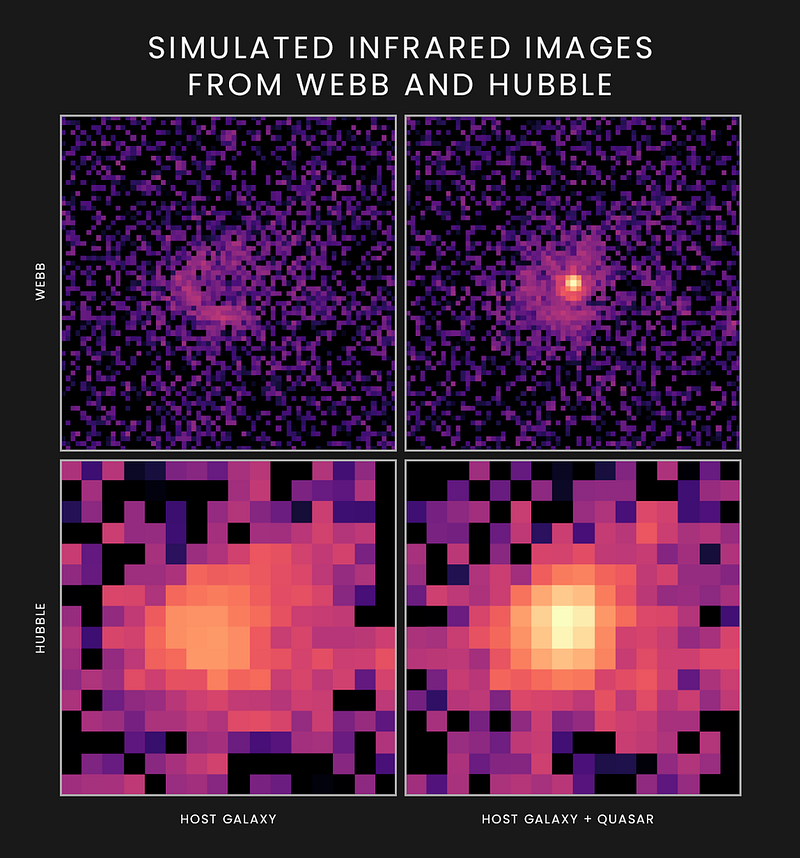
These simulated images depict how a quasar and its host galaxy would appear to NASA's James Webb Space Telescope (top) and Hubble Space Telescope (bottom) at infrared wavelengths. Webb's larger mirror will provide over four times the resolution, enabling astronomers to distinguish the galaxy's light from the dominant light of the central quasar. (Credits: M. Marshall (University of Melbourne))
The advanced capabilities of Webb may fulfill scientists' aspirations. With resolution far exceeding that of Hubble, James Webb promises detailed analyses of planets, quasars, exoplanets, and various cosmic phenomena.

This artistic depiction presents exoplanet TOI-421 b, a hot sub-Neptune-sized planet orbiting a Sun-like star approximately 244 light-years from Earth. It is believed to possess a clear atmosphere without haze or clouds. (Credits: NASA, ESA, CSA, and D. Player (STScI))
For further details and to follow the intriguing journey of Webb, visit here.
Chapter 2: The First Cosmic Images from Webb
The James Webb Space Telescope is about to unveil its first stunning images, showcasing the vastness of the universe.
Chapter 3: Revealing the Early Universe
The James Webb Space Telescope aims to illuminate the mysteries of the early universe, providing insights that could reshape our understanding of cosmic history.